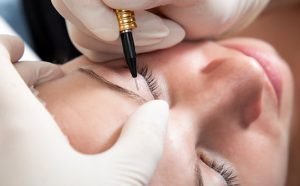 Want to change the shape of your lips, give them volume, increase, change their color or maybe make your eyes more impressive? Incredibly, but the fact is that modern technologies of permanent makeup make it possible to do all this! Cosmetic permanent makeup is a method of color correction of the shape of the lips, eyebrows, eyelids, which allows you to create a desired contour of eyebrows, eyes and lips, practically without traumatizing the skin. Find out more about how to make a permanent makeup taking into account all important things to keep in mind.
Want to change the shape of your lips, give them volume, increase, change their color or maybe make your eyes more impressive? Incredibly, but the fact is that modern technologies of permanent makeup make it possible to do all this! Cosmetic permanent makeup is a method of color correction of the shape of the lips, eyebrows, eyelids, which allows you to create a desired contour of eyebrows, eyes and lips, practically without traumatizing the skin. Find out more about how to make a permanent makeup taking into account all important things to keep in mind.
Contents
- Step number 1: Check out the contraindications
- Step number 2: Choose the highly experienced doctor
- Step number 3: Prepare for the procedure of permanent makeup
- Step number 4: Take care of your skin after the procedure
- Video
Step number 1: Check out the contraindications
 First of all, before you decide to have a permanent makeup you are recommended to get acquainted with the contraindications for permanent make-up. Contraindications for permanent makeup are divided into absolute, excluding the possibility of using this method, and relative, when it is possible if certain conditions are met.
First of all, before you decide to have a permanent makeup you are recommended to get acquainted with the contraindications for permanent make-up. Contraindications for permanent makeup are divided into absolute, excluding the possibility of using this method, and relative, when it is possible if certain conditions are met.
Absolute contraindications:
- Decompensated forms of diabetes mellitus;
- Severe diseases of internal organs, hepatic and renal insufficiency;
- Any chronic illness during the period of exacerbation;
- Increased body temperature;
- The tendency of the skin to form keloid scars;
- Progressing stage of psoriasis, psoriatic rashes on the face;
- Severe immunodeficiency conditions, HIV;
- Hemophilia and other diseases, accompanied by a decrease in blood coagulability;
- Epilepsy, increased convulsive alertness;
- Severe mental disorders;
- Alcoholic and narcotic intoxication.
Relative contraindications:
- Bad health of any origin, flu, even “just a runny nose” without temperature – permanent makeup is better to postpone until complete recovery.
- Inflammatory processes on the skin, pustular eruptions in the area of exposure, aggravation of acne and rosacea. Tattooing can be done only during remission – the absence of inflammatory elements and pustules on the skin.
- Treatment with potent drugs (antibiotics, corticosteroids, anticoagulants, retinoids, etc.), during the course of radiation and chemotherapy. The permanent makeup can be performed not earlier than 2 weeks (or more, depending on the specific drug) after the end of treatment.
- Malignant tumors: permanent makeup can be done only with the written permission of your healthcare specialist.
- Benign neoplasms of the skin in the area of exposure – micropigmentation of moles is contraindicated, since they cannot be injured by a needle.
- Warts and papillomas – after the permanent makeup their size may increase, new rashes may appear. Therefore, you should delete them beforehand.
- Autoimmune diseases are characterized by the fact that the body begins to produce antibodies to its own cells, i.e. immune cells perceive normal human cells as a foreign agent and tend to destroy them. Permanent make-up is allowed only in the remission phase of the disease with the written permission of the doctor.
- Hypertension, high blood pressure. The procedure of permanent makeup is stress, which can provoke hypertensive crisis. Before conducting it, you should measure the pressure, if necessary – take an antihypertensive drug.
- Allergic diseases (e.g. atopic dermatitis) and reactions (e.g. relapsing allergic dermatitis) – before the procedure, a test should be done on the tolerability of painkillers and pigments, the use of which is planned during the procedure.
- Herpes in the acute stage is a contraindication waiting for any kind of permanent makeup. It can only be done after the full healing of the rashes and tattooing of the lips – after 3-4 weeks only against the background of preventive antiviral medication.
- Conjunctivitis. With allergic conjunctivitis, permanent eye makeup can help to alleviate its course because after it is carried out eye irritation with decorative cosmetics is reduced. But even with allergic and bacterial conjunctivitis permanent makeup can be done only outside the period of the exacerbation.
- Pregnancy and lactation. Since clinical trials on pregnant and lactating women are prohibited in all countries, the safety data of permanent make-up pigments are only confirmed for women outside the period of pregnancy and breastfeeding. Studies conducted on pregnant animals have not revealed any negative effect on the fetus but it is impossible to unequivocally distribute these data to humans. Pregnancy is a condition of the woman’s body, in which any interference in its functioning should be carried out only if necessary. Permanent makeup is not a necessity so it is better to do it not earlier than 2-3 months after the lactation.
- Plastic surgery in the area of alleged tattooing. For example, after blepharoplasty, permanent eyelid makeup can be done no earlier than 6 months after surgery – after complete stabilization of the tissues.
- The period of menstruation is accompanied by increased pain sensitivity and reduced coagulability of blood, so permanent makeup is better to plan for the middle of the cycle.
- Underage age – permanent makeup until the age of majority is shown only with serious cosmetic defects. As a rule as a supplement to the methods of plastic surgery.
Important: Don’t ignore contraindications if you have such and do a permanent makeup only if this procedure is safe for you at the moment.
Back
Step number 2: Choose the highly experienced doctor
 In recent years, permanent makeup has become very popular because in one session you can transform and then look stunning 24 hours a day. However, to get the perfect results you need to find the experienced doctor who will be able to do the whole procedure taking into account all safety recommendations.
In recent years, permanent makeup has become very popular because in one session you can transform and then look stunning 24 hours a day. However, to get the perfect results you need to find the experienced doctor who will be able to do the whole procedure taking into account all safety recommendations.
How to choose a good specialist:
- Check if the specialist has medical qualifications;
- Find out if the doctor has rich experience in the sphere of permanent makeup;
- Read the reviews of the clients who have already done this procedure;
- Ask about the techniques of makeup he or she uses;
- Check out which equipment the doctor uses;
- Check out which materials he or she uses
What should you know about materials and equipment used?
Permanent makeup is applied only under anesthesia. Existing modern methods of anesthesia are the newest preparations, gels and ointments, which guarantee the maximum comfort. During the procedure, only disposable gloves, needles and nozzles, a sterilized instrument and parts must be used. The apparatus in no small measure affects the result of the procedure. It must be powerful and modern. The apparatus should be powerful so that after the procedure all the sections are evenly colored.
For permanent makeup plant and mineral color pigments are used. The paint contains mainly plant pigments, while mineral pigments are present as an additive. Plant pigments for permanent makeup are distinguished by a wide variety of natural shades. Vegetative pigments are destroyed more quickly, and mineral pigments are preserved for several years. Over the past 10 years, permanent makeup technologies, as well as equipment and materials have become more sophisticated and the procedure itself is not so painful. Today, permanent makeup from a simple cosmetology procedure has turned into a real art: with its help you can solve not only aesthetic problems but bring your appearance to perfection having chosen the professional in this sphere. With a properly conducted procedure there should not be any complications.
Important: The choice of the doctor is the most important step in doing makeup as only experienced specialist is able to make you beautiful in a safe way taking into account all your individual wishes and needs. Skillful specialists will be able to use laser removal of permanent makeup if you haven’t liked something.
Back
Step number 3: Prepare for the procedure of permanent makeup
![permanent-makeup-eyeliner-1[1]](https://howfacecare.com/wp-content/uploads/2017/04/permanent-makeup-eyeliner-11-300x201.jpg) If you aren’t contraindicated to do permanent makeup and have already found the doctor, the next step recommended is to learn more about the stages the procedure itself includes and how it is recommended to prepare for the procedure of having permanent makeup.
If you aren’t contraindicated to do permanent makeup and have already found the doctor, the next step recommended is to learn more about the stages the procedure itself includes and how it is recommended to prepare for the procedure of having permanent makeup.
General stages of permanent makeup procedure:
- First, you will be asked about the possible contraindications to permanent makeup. Be ready to tell him the names of the medicines you take and the chronic diseases if you have such.
- Next, you have to tell about what you expect from permanent makeup, what result you want to get (do not forget to bring decorative cosmetics with you), and the master will help you determine the capabilities of the method.
- You will be able to choose your future appearance – colors, contours, way of application. For you, the choice of makeup style can be “natural”, with the selection of colors in tone to natural skin tones or “decorative” – with brighter colors.
- Then the skin is treated with an antiseptic solution and the master draws a makeup sketch on it with a pencil or special marker, which you must approve. If something does not suit you – it will be corrected, drawn anew as many times as necessary – until you are unequivocally sure that it completely reflects your ideas about the perfect makeup.
- Before the beginning of the session the specialist will indicate all the dyes that will be used during the procedure, their color indices and the numbers of sanitary and hygienic certificates.
- Before the permanent makeup on the treated areas of the skin an anesthetic cream is applied or an anesthetic injection is made.
- When the anesthesia works, according to the makeup sketch, the master injects pigment solutions into the skin using a dermopigmentator similar to a large ballpoint pen – this is a very laborious task, requiring great care and usually takes several hours.
General recommendations how to prepare for the procedure:
- If you suffer from recurrent herpes in the area of the lips, then you can perform permanent makeup on your lips no earlier than 4 weeks after the last exacerbation. Before the permanent lip makeup on preliminary consultation, you will most likely be assigned an antiviral drug for ingestion. This is required for prevention as the tattooing process is associated with a lot of superficial injections, which creates a predisposition to exacerbation of herpes.
- 2 days before the procedure you should stop taking medications that reduce blood clotting (including – aspirin).
- On the day when you have a procedure you must not drink alcohol, drink coffee, do active sports.
- Do not do permanent makeup during menstruation. Optimal period is to plan the procedure in the middle of the menstrual cycle.
- In some cases, for example, with a tendency to allergies, a trial application of the dye in some inconspicuous place, for example behind the ear, is recommended several days or weeks before the procedure.
Before you do eyebrows tattoo
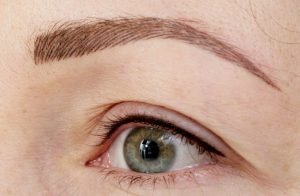 Few of us have eyebrows of normal density and ideal shape. More often we have eyebrows different in length, with uneven hair growth and not the color we like. Permanent makeup of eyebrows allows not only save time spent on daily makeup but also correct these shortcomings. If you come to the master knowing exactly what shape and color of eyebrows you want to have, permanent makeup will be a fairly simple procedure and take about an hour. Choose dyes used for permanent makeup of eyebrows based on the color of the skin and hair:
Few of us have eyebrows of normal density and ideal shape. More often we have eyebrows different in length, with uneven hair growth and not the color we like. Permanent makeup of eyebrows allows not only save time spent on daily makeup but also correct these shortcomings. If you come to the master knowing exactly what shape and color of eyebrows you want to have, permanent makeup will be a fairly simple procedure and take about an hour. Choose dyes used for permanent makeup of eyebrows based on the color of the skin and hair:
- Brown-haired and light-skinned brunettes are recommended different shades from the chocolate range, with “cold” hair color – dark gray tones of the permanent;
- Blondes are recommended to have eyebrows 2-3 shades darker than the hair;
- Brunettes with dark skin – brown, close to black (but not absolutely black – it is used only in permanent eye makeup);
- Brown hair and hair with ashy or smoky tint looks well in harmony with the gray tones of the permanent;
- Gray, not dyed hair looks good with brown and gray colors.
When choosing the color of eyebrows, it is also important to consider the color of the eyes. A wide palette of dyes for permanent makeup allows you to choose a shade that will look quite contrast and at the same time naturally.
If you dye your hair the choice of color for permanent eyebrow makeup is especially important since it lasts for several years: your decision to radically recolor will lead to the need to do permanent correction, otherwise the color harmony of makeup will be disrupted.
Before you do eyes tattoo
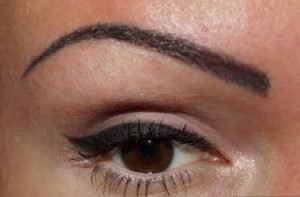 Permanent makeup of the eyes is worth doing not only in youth when the main goal is to be always beautiful but also in adulthood as it will return brightness to
Permanent makeup of the eyes is worth doing not only in youth when the main goal is to be always beautiful but also in adulthood as it will return brightness to
fading natural colors and hide the age-related changes in the skin of the eyelids. If necessary, do chemical painting of the eyelashes in the cabin beforehand, since it is not recommended to dye the eyelashes within 2 weeks after the procedure,
You need to remove the lenses and take a solution with you to save them for the duration of the procedure. If you are planning to do makeup of eyes: do a correction or a permanent makeup of eyebrow first. After all, the eyeliner should be in harmony with the shape of the eyebrows. If you wear glasses, do not forget to take them with you. Makeup in glasses and without them may look very different. Also bring along cosmetics that you usually use.
Before you do lips tattoo
 Permanent makeup of lips will help:
Permanent makeup of lips will help:
- Increase the volume of thin lips;
- Visually raise their lowered corners;
- Give brightness to the pale lips.
The color palette of pigments used for permanent lips makeup is very wide: with the help of light almost imperceptible colors you can visually increase or decrease the volume of the lips, make their outline more clear. Colors on 1-2 shades brighter than natural will help to cope with the pale lips. Bright colors will provide the effect of “permanent lipstick.”
Depending on what result you want to get, permanent lip makeup can be carried out not only in different colors but also in different volumes.
A special feature of permanent lips makeup is needed to prevent exacerbation of herpes. This virus infected more than 90% of the population of large cities. Only in some people it is practically not manifested but in others it recurs frequently. Permanent makeup is a set of microscopic injections and such mechanical irritation often provokes exacerbation of herpes on the lips. Since herpetic vesicle rashes are not only unpleasant in themselves, they can also affect the result of permanent makeup – preventive antiviral medication is recommended.
Important: Take into account all recommendations before you have a procedure of the permanent makeup in order to reach the best possible effect. A specialist will recommend certain options and, in most cases, you can rely on his opinion but do not forget – it is you who choose makeup, its contours and colors that you want to get as a result!
Back
Step number 4: Take care of your skin after the procedure
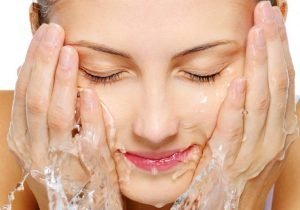 General recommendations:
General recommendations:
- Do not visit hot countries for a month after the procedure as direct sunlight should not affect the area where you have a permanent makeup. The same rule refers to visiting the solarium.
- Remember that immediately after the procedure makeup will seem too bright. After a while, as a result of healing of microtraumas obtained as a result of the procedure, a protective crust will form on the injury place, which gradually will peel off. The appeared crust in no event cannot be removed mechanically!
- You should postpone visiting a dentist after you have done lips makeup.
- Do not do other cosmetic procedures (peeling, scrubbing, various additional masks).
- In no case you shouldn’t wash the place of the procedure with soap and water, rub or scratch!
- The pigmented area should be lubricated with the recommended ointment all the time until complete healing, using cotton buds, to avoid infection do not touch it with your hands. If you are going to apply other means for healing and moisturizing – be sure to consult your doctor.
- With constant moistening of the permanent place in the first days after the procedure, you can avoid crusts and completely retain color.
Additional recommendations of aftercare for each type of makeup:
Eyebrows
For two weeks after the procedure, try not to wet your eyebrows with water – do not go to the swimming pool or sauna. If you have tattooed eyebrows in the summer – always use sunscreen before going out for 2-3 weeks. After 3 weeks makeup will get the desired brightness.
At your request, a specialist can make a clearly outlined, tightly colored eyebrow contour but this is an outdated form of makeup. Currently, feathering and hair technology are much more in demand since this makeup looks more natural.
Eyes
On the first day, gently rub your eyes with a cosmetic cotton swab dipped in chlorhexidine. Within 1-2 days, if redness or swelling persists, lubricate the treated area with a thin layer of 0.5% eye hydrocortisone ointment, which is sold in pharmacies for application under the eyelid on the cornea of the eye. It is necessary to apply it only on its outer surface.
Lips
The healing period after permanent lip makeup lasts 3-7 days. Puffiness of the lips is preserved for no more than 2 days. On the first day, the surface of the lips will get a little wet – soak them (do not rub) with a cloth moistened with 0.05% chlorhexidine solution. Then a thin crust will form on the lips. Through it, the permanent will look faded. Your task is to protect these crusts. For 5-7 days avoid contact with the surface of the lips with spicy, salty and acidic foods, as well as alcohol containing substances, do not kiss to prevent infection.
Important: After applying permanent makeup, the doctor will necessarily give detailed recommendations on the care of the place of the procedure. How well the pigment will be perceived by your skin depends on how you follow recommendations. The post-procedural period of skin care is very important!
Back
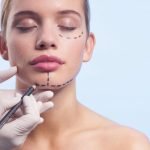
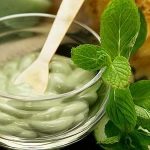
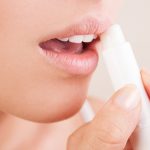

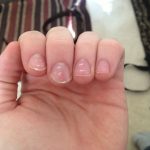

I have never really tried to use makeup before, and I have been curious about it! I had no idea there were such things as permanent makeup! You would definitely want to pick dyes and colors based off of the color of your skin, and hair! That’s a great tip! Thank you!